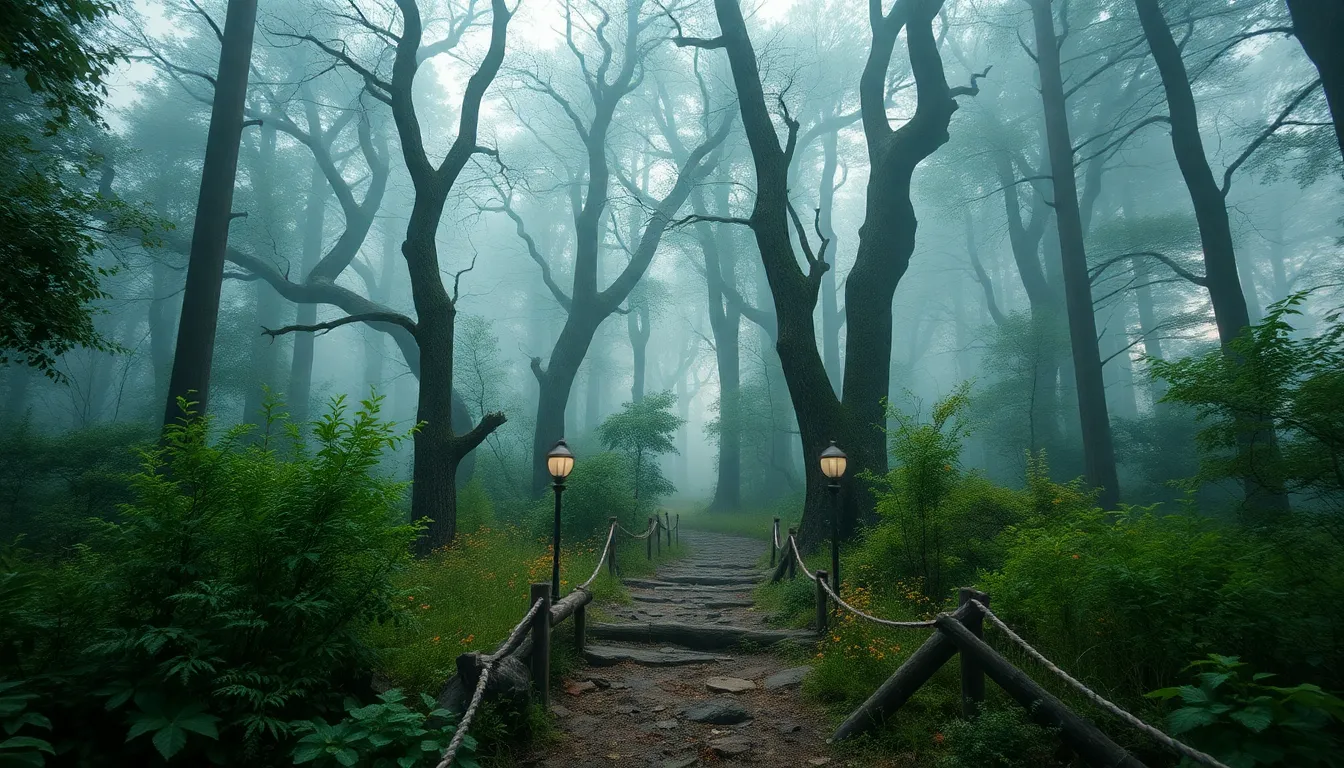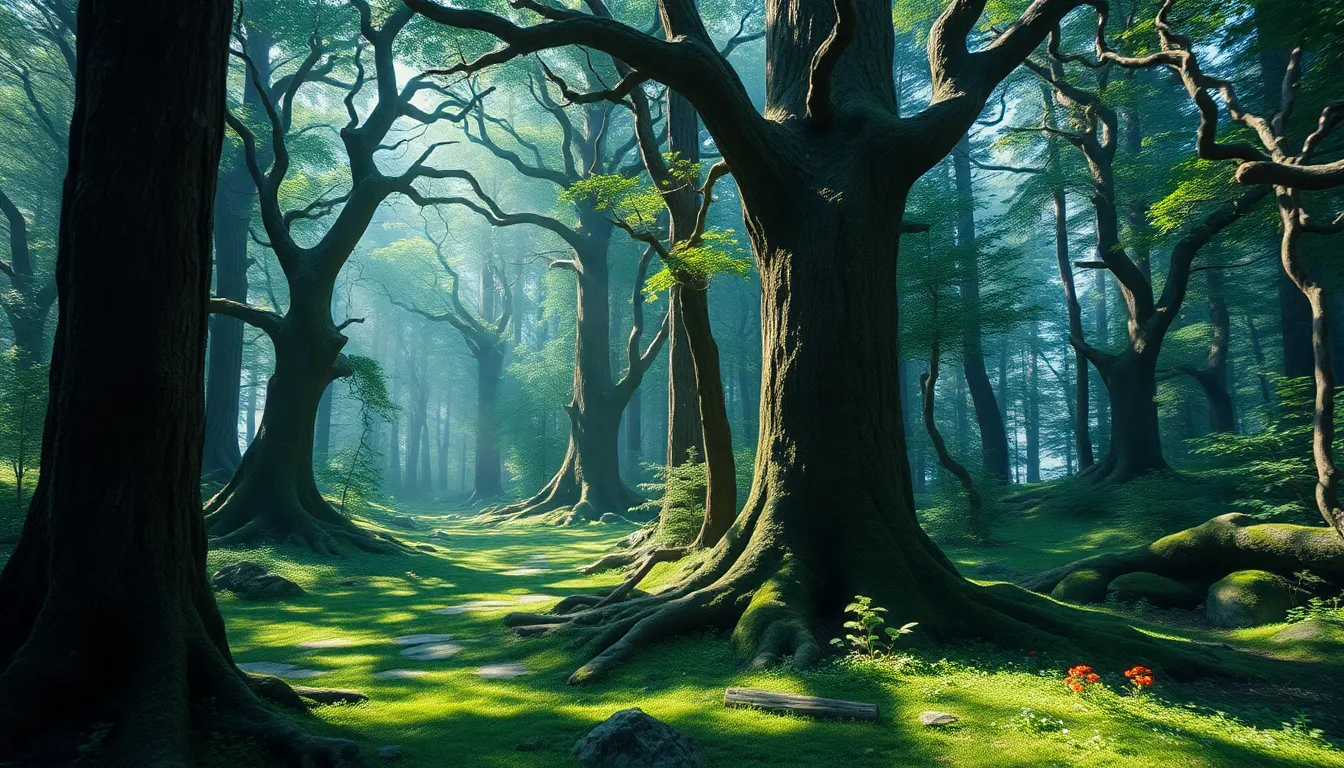Enchanted Forests: Nature’s Own Fantasy World
Introduction to Enchanted Forests
Enchanted forests are often depicted as magical places filled with wonder and mystery. Defined as dense woodlands that evoke a sense of fantasy and otherworldliness, these forests are not only natural landscapes but also cultural symbols steeped in myth and folklore. Across various cultures, enchanted forests represent the intersection of nature and the supernatural, serving as backdrops for countless tales of adventure and enchantment.
From the mystical woods of European fairy tales to the sacred groves of indigenous cultures, the significance of enchanted forests transcends geography and time. They are often seen as realms where the ordinary meets the extraordinary, where fairies dance, and mythical creatures roam.
The Ecology of Enchanted Forests
Enchanted forests are characterized by their unique ecosystems, which support a diverse array of life. These ecosystems often feature:
- Dense canopies that filter sunlight, creating a serene, dimly lit environment.
- Rich undergrowth filled with ferns, mosses, and a variety of shrubs.
- Habitats that support a wide range of wildlife, from small mammals to large birds.
The biodiversity within these forests is remarkable. Common flora includes:
- Ancient trees such as oaks, elms, and redwoods.
- Colorful wildflowers that bloom in the spring.
- Fungi and lichens that add to the forest’s enchanting appearance.
Fauna often includes elusive creatures like foxes, deer, and various species of birds, all of which contribute to the magical ambiance of these ecosystems.
Geographical Distribution of Enchanted Forests
Enchanted forests can be found in various regions around the world, each possessing unique characteristics that contribute to their allure. Notable examples include:
- European Fairy Tale Woods: Forests in Germany and Scandinavia, such as the Black Forest, are often linked to folklore and fairy tales.
- Amazon Rainforest: Known for its biodiversity, the Amazon is home to numerous mythical creatures in indigenous legends.
- Japanese Mystical Forests: Forests like Aokigahara, also known as the Sea of Trees, are steeped in mythology and are known for their beauty.
Climate and geographical factors, such as altitude, soil type, and moisture levels, play significant roles in shaping these enchanted environments, making them unique and captivating.
The Role of Myths and Folklore
Enchanted forests are rich in local legends and stories. Many cultures have built narratives around these magical places, often featuring:
- Spirits and deities that protect the forest and its inhabitants.
- Adventures of heroes who brave the woods to find treasures or fulfill quests.
- Warnings about the dangers lurking within, instructing travelers to respect the natural world.
These narratives not only shape cultural identities but also attract tourism, as individuals seek to experience the magic of these forests for themselves.
The Aesthetic Appeal of Enchanted Forests
The visual characteristics of enchanted forests contribute significantly to their allure. Some notable aesthetic features include:
- A rich color palette, ranging from deep greens and browns to vibrant splashes of color from flowers.
- Dramatic lighting created by sunlight filtering through the leaves, often casting ethereal shadows.
- Seasonal changes that transform the landscape, such as the vibrant colors of autumn or the serene stillness of winter.
Artists, writers, and filmmakers have long drawn inspiration from these enchanting environments, resulting in countless representations in literature, film, and visual arts. From the illustrations of Arthur Rackham to the films of Studio Ghibli, the aesthetic appeal of enchanted forests continues to inspire creativity.
The Psychological Effects of Enchanted Forests
Research has shown a strong connection between nature and mental well-being. Enchanted forests, in particular, provide unique benefits:
- Stress relief through immersion in nature’s tranquility.
- Inspiration derived from the beauty and mystery of the surroundings.
- Spaces for reflection and creativity, encouraging individuals to explore their thoughts and feelings.
These forests serve as sanctuaries where people can reconnect with themselves and the natural world, fostering a sense of peace and well-being.
Conservation Efforts for Enchanted Forests
Despite their beauty, enchanted forests face numerous threats, including:
- Deforestation due to logging and agricultural expansion.
- Climate change impacting biodiversity and ecosystem balance.
- Urbanization leading to habitat fragmentation.
However, successful conservation initiatives are underway worldwide, aimed at preserving these magical spaces. Efforts include:
- Protected area designations to safeguard critical habitats.
- Community engagement programs to educate locals about sustainable practices.
- Restoration projects that aim to revive degraded areas.
These initiatives are crucial in ensuring that enchanted forests continue to thrive for future generations.
Enchanted Forests in Modern Popular Culture
In contemporary culture, enchanted forests have become prominent in literature, movies, and video games. Notable examples include:
- The magical woods of “The Chronicles of Narnia” by C.S. Lewis.
- Films like “Pan’s Labyrinth” and “Into the Woods” that explore dark and whimsical themes.
- Video games like “The Legend of Zelda” series, where forests play a crucial role in storytelling.
These depictions have solidified the enchanted forest’s role in the fantasy genre, influencing how stories are told and experienced.
Experiencing Enchanted Forests: Ecotourism and Adventure
For travelers seeking to experience the magic of enchanted forests firsthand, numerous destinations offer unique experiences. Popular locations include:
- The Black Forest in Germany, known for its scenic beauty and fairy tale connections.
- The Redwood National and State Parks in California, home to ancient trees and breathtaking landscapes.
- The Aokigahara Forest in Japan, offering serene trails and a deep cultural significance.
Visitors can engage in various activities that connect them with nature, such as:
- Hiking through scenic trails.
- Guided tours that delve into the history and ecology of the forest.
- Workshops focusing on art, photography, or environmental conservation.
These experiences not only enhance appreciation for nature but also promote responsible tourism.
Conclusion: The Future of Enchanted Forests
The preservation of enchanted forests is vital for maintaining biodiversity and cultural heritage. As these magical places face increasing threats, it is essential for individuals and communities to take action. Simple steps include:
- Supporting conservation efforts and organizations dedicated to protecting these ecosystems.
- Engaging in sustainable practices that minimize environmental impact.
- Advocating for policies that protect natural landscapes.
By fostering a deeper connection with enchanted forests, we can ensure that future generations experience the wonder and beauty of these irreplaceable natural treasures.



